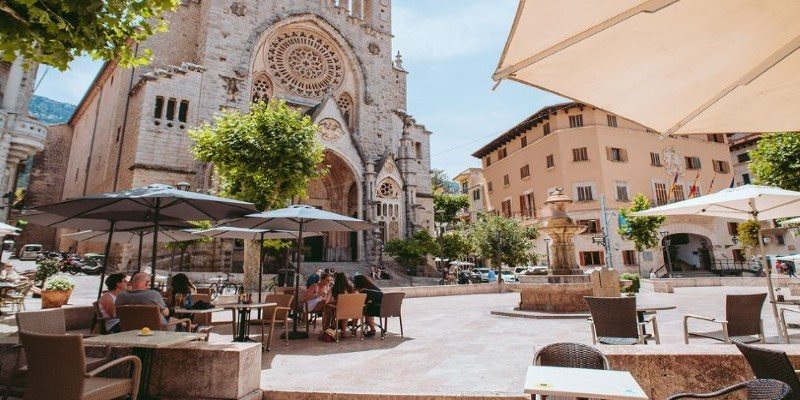Whispers of Ecuador: A Journey Through Land and Time
The scent of roasting coffee drifts through the early morning air in Quito, mingling with the cool breeze that sweeps down from the Andean peaks. The city, resting high in the mountains, is a blend of past and present—Spanish-era cathedrals stand tall against the backdrop of modern life. Here, in the heart of Ecuador, life moves at its rhythm. Markets burst with color, streets echo with music, and history lingers in the stones of every colonial building.
Ecuador stretches in all directions like a vivid postcard comes to life outside of the capital. From snow-capped volcanoes to emerald jungles and golden coastlines, the country literally tells a story of nature's infinite creativity. It holds all its past close while embracing the future—from the highlands through the Amazon to cities and villages where little happens.
Mountains and Valleys: The Andean Heartbeat
The Andes pierce through Ecuador like a bony spine carved out of stone, molding the landscape and the very people who have come to claim it as home. The crisp, thin air is full of the vast horizon above and in which time, too, crawls to synchronize with the constant beat of mountains.
The villages cling to the slopes, their daily life based on harvest cycles and festivals; traditions are incorporated into every weave of the identity of the people. The history of the communities in the highlands, a heritage of the Inca and others before them, is expressed through intricate textiles and vibrant colors in symbols passed from generation to generation.
Among the most dramatic vistas of the Andes lies Cotopaxi, a nearly perfect volcanic cone that rises like an unassuming sentinel above the páramo, a wind-torn grassland home to wild horses. Further south, in Cuenca, colonial charm, red-tiled roofs, and sky-blue domes create an elegance in time. Cobblestone streets lead one to cathedrals, museums, and secret courtyards where the past lingers in quiet corners.
Quito is Ecuador's capital and a harmonious blend of history and modernity. As a UNESCO World Heritage Site, the old town of Quito is a labyrinth of whitewashed buildings with flower-laden balconies and golden churches. Towering above the city are sweeping views from the Basilica del Voto Nacional, a true architectural masterpiece. Otavalo's markets overflow with handcrafted ponchos, silver jewelry, and wooden carvings where commerce meets tradition, and every artifact has a story.
The Green Heartbeat of the Amazon
Beyond the mountains, the land falls away into an ocean of green—the Amazon. The air here is thick with humidity, filled with the calls of howler monkeys and the rustling of unseen creatures in the undergrowth. Rivers snake through the jungle, their waters carrying both life and legend.

Small communities live along these waterways, their existence shaped by the river’s moods. Indigenous tribes, like the Kichwa and Huaorani, have called the rainforest home for centuries, their knowledge of the land deep and instinctual. They speak of the trees, the plants, and the creatures that share their world—not as separate entities but as part of a greater whole.
For travelers who venture into the jungle, the Amazon is more than a place—it is a world unto itself. Canoeing down the Napo River at sunset, fireflies blink like tiny stars, mirroring the sky above. In the darkness, the forest hums with life, a reminder that this is one of the most biodiverse regions on Earth. The Yasuni National Park, one of the richest ecosystems in the world, shelters jaguars, pink river dolphins, and thousands of species of birds, insects, and plants.
The people of the rainforest have mastered the art of survival in this vast and complex world. They know which plants heal, which ones harm, and which are sacred. Shamans perform ceremonies passed down through generations, using natural remedies found only in this deep and mysterious land. The Amazon, in all its wild beauty, is more than just a forest—it is a living, breathing entity, its secrets known only to those who listen.
The Pacific Coast: Sun, Sand, and Stories
On Ecuador's western edge, the towering Andes gradually soften into rolling hills before meeting the Pacific Ocean. The coastline, a dramatic clash of land and sea, is where waves carve against rugged cliffs and fishing boats drift on the horizon. Small coastal towns like Montañita and Puerto López capture the essence of this diverse landscape—where adventure and relaxation coexist.

Montañita, a bohemian surf town, draws wave riders from around the world. Its laid-back charm, golden beaches, and vibrant energy make it a haven for those seeking both tranquility and excitement. Further north, Puerto López serves as the gateway to Isla de la Plata, often called the “Poor Man’s Galápagos.” Home to blue-footed boobies, frigatebirds, and playful sea lions, the island offers a glimpse of Ecuador’s extraordinary biodiversity.
This coastline is also steeped in history. Near Manta, the ruins of the Manteño civilization whisper tales of pre-Columbian maritime traders who connected Ecuador to distant lands. Their legacy lives on in artifacts that hint at ancient trade routes stretching as far as Mexico and Peru.
Further south, Guayaquil pulses with life. Ecuador's largest port city blends modernity with colonial charm. The Malecón 2000 promenade is a riverside retreat, while the historic Las Peñas neighborhood, with its colorful homes and winding streets, offers breathtaking views of the Guayas River.
Along this coastline, food tells a story of the sea. Ceviche, fresh and zesty with lime, and encocado, rich with coconut and seafood, embody Ecuador’s coastal flavors—simple, bold, and unforgettable.
Conclusion
Ecuador is more than a destination—it’s a living postcard where history, nature, and culture intertwine. From the towering Andes to the dense Amazon and the sunlit Pacific shores, every corner tells a story. It’s a land where traditions endure, landscapes inspire, and flavors leave a lasting impression. Whether wandering through colonial streets, exploring untouched rainforests, or standing at the ocean’s edge, Ecuador offers an experience both timeless and unforgettable, a place that lingers in the heart long after leaving.









